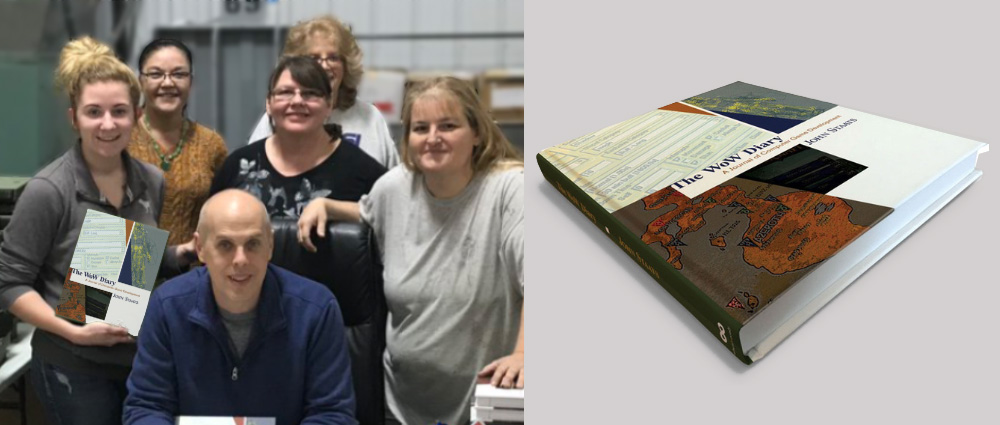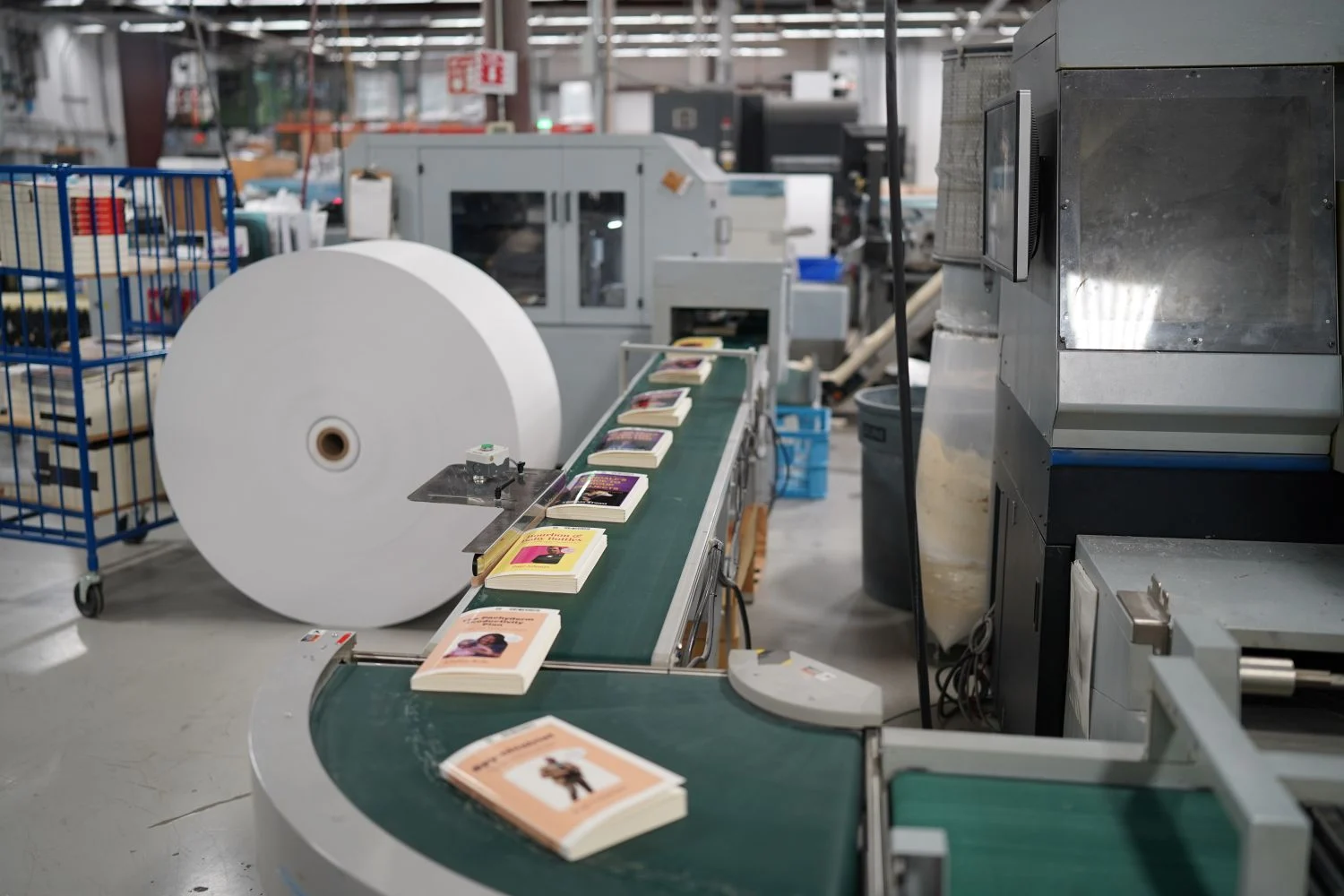When John Staats heard a news story that reminded him how difficult game development is, he thought it would be great if gaming enthusiasts knew what goes into creating an engaging multiplayer game. And then he remembered his extensive notes from his time on the design team of Blizzard’s wildly popular online role-playing game, World of Warcraft.
Over the next couple of years, Staats turned those notes into The World of Warcraft Diary, and he was gracious enough to spend time with us describing the project and why he selected Walsworth to manufacture the book.
Walsworth: What was your vision for the book, and who is the intended audience?
John Staats: Honestly, I had students in mind, and anybody with an artistic inclination who might not think of a career in game design because they aren’t familiar with what goes into projects like that. In the book, I share how there’s really no magic. It’s just a lot of hard work and is more attainable than people realize. So, I wanted to show how human the process is in hopes of inspiring people to consider the career field.
Since it’s essentially an educational book, I’d ideally like to see it used as a textbook in classrooms as much as a coffee-table book for gaming fans who want to know how World of Warcraft came together.
When you decided to share your experiences, how did you determine it should be a coffee-table book?
Staats: Well, I had a lot of images and screenshots showing how a game comes together during development. A lot of people think it would be fun working at a game company, but the fun doesn’t really happen until the last five percent of the process when the game is actually playable. Before that, it’s fairly ugly and full of snags that stop you from progressing in the game.
I thought it would be interesting to readers to see how the pieces come together incrementally, so I included about 130 images with descriptive captions to visually describe that progression. For instance, I show stuff that is invisible to a player. If your character is walking down some stairs in a crypt, you’re actually walking down a ramp that slices midway through the stairs. It’s a simplified geometry, and an image showing what a player is actually walking on is enlightening.
Another example is showing what’s going on when a player collides with something like a wall. The player is in a box like a dreidel, so if you walk into a wall, the game doesn’t have to look at the geometry of your arm or toes. As far as the game is concerned, it’s using the geometry of a simple box to provide visualization of the collision. I think there’s a lot of beauty and elegance in what’s going on behind the scenes.
Does it have a diary feel?
Staats: I wrote the book with non-technical people in mind. I explain basic things, like what a game engine is, and how animation works. So, when I mention those things in the chronological narrative, readers know what I’m talking about.
It’s based on notes I took each month during the four years I worked on the World of Warcraft design team, but it’s not a diary. It’s like the anatomy of a computer game company and gives you a comprehensive understanding of the product and the process.
How did you get into a career designing games?
Staats: Back in grade school, I would make homemade Dungeons and Dragons novels for my cousins. They would buy a game and would read it and see all the spoilers of the little adventure we were supposed to play. So I’d make up my own stories.
Then, when I discovered that id software had released rendering engines for free to the public, I was one of the hobbyists who was super enthusiastic about turning those old Dungeons and Dragons modules into 3d spaces in order to walk through them visually. I was so into it that after four and a half years of doing that for long hours, I inadvertently built a portfolio that was professional level quality. That led to the opportunity to work at Blizzard on the World of Warcraft project.
When you were working on the World of Warcraft project, did you have any idea it would be so popular?
Staats: Yes. Absolutely. Blizzard had a sterling reputation even before World of Warcraft. All of their games had become mega-hits. They resolve all their mistakes and self-publish, which are key parts of producing super-polished products that get better over time.
I didn’t even know what the project was before I moved to work for Blizzard. I just knew it was a great company to work for.
Could you tell us about the fundraising process for your project?
Staats: I used Kickstarter to fund the project. In fact, it broke a record as the highest fundraiser for a non-fiction book.
How did you attain such success?
Staats: Everybody says you fail on your first Kickstarter campaign, and my first attempt failed miserably. I supported my second attempt with lots of interviews, promotional campaigns, chat sessions and the like – anything I could do to get in front of the right audience.
The big difference was I had many advisers during my second attempt where I made the first attempt entirely on my own.
Where in the process did you choose Walsworth to manufacture your book?
Staats: I felt strongly that I wanted to produce the book in the United States, so I solicited the top ten domestic book manufacturers.
The reason I selected Walsworth is because the quotes were so much more detailed and organized. And Walsworth’s representative, David Sutch, took the time to understand my goals and expectations. It was a collaborative process. David isn’t a gamer and he wasn’t familiar with crowd funding, but he took the time to understand the audience and provided ideas along the way to make the project better.
In fact, it was Walsworth that helped me with ideas to provide a special edition for my Kickstarter backers, who were constantly asking for upgrades. That’s why we added things like book markers and gold foil. The biggest upgrade for the special edition is the spot UV on the images. The spot UV provides more dimension to the page, so I’m excited about that.
Walsworth extends its thanks to John for taking time to describe his project.
You can learn more about our book manufacturing capabilities here.






